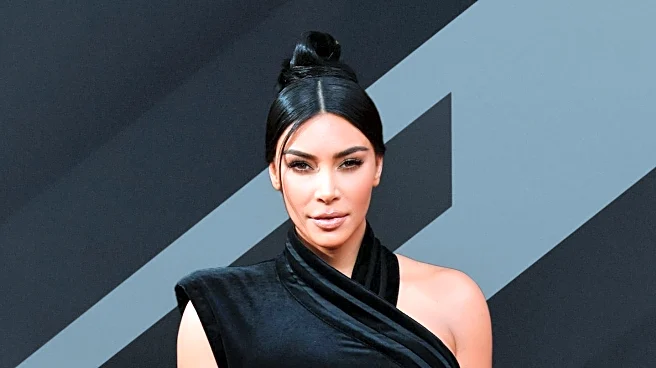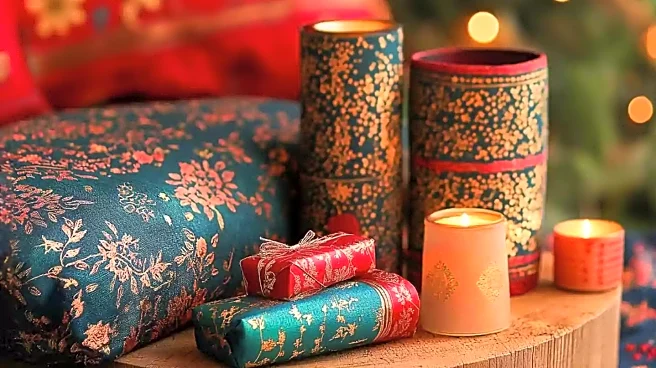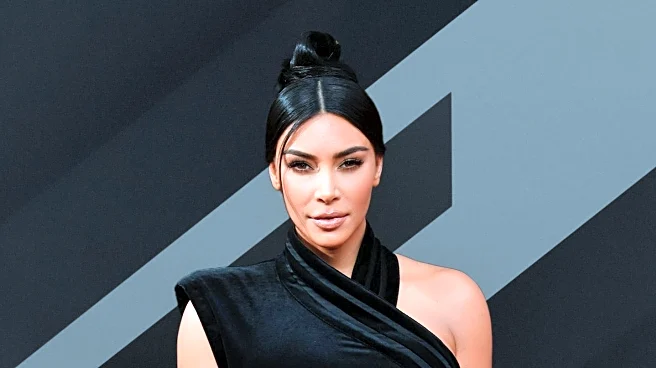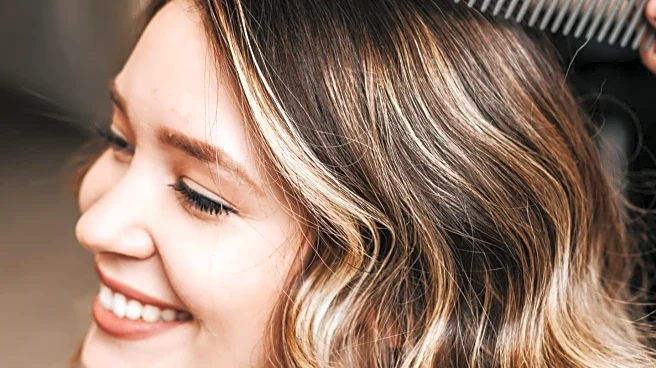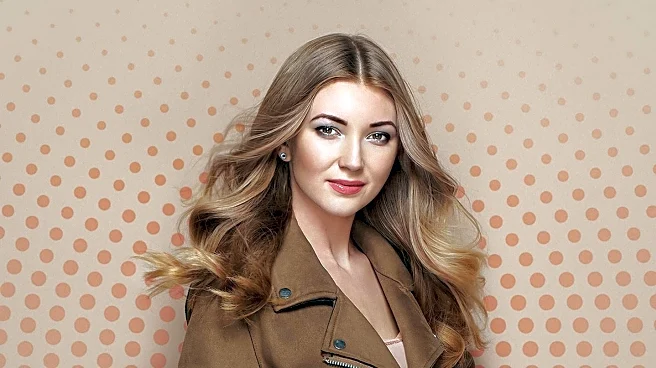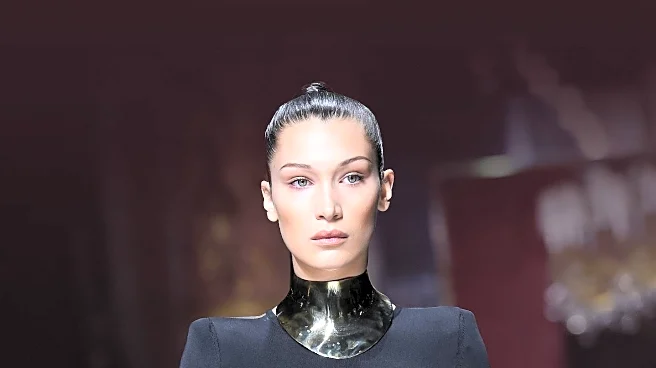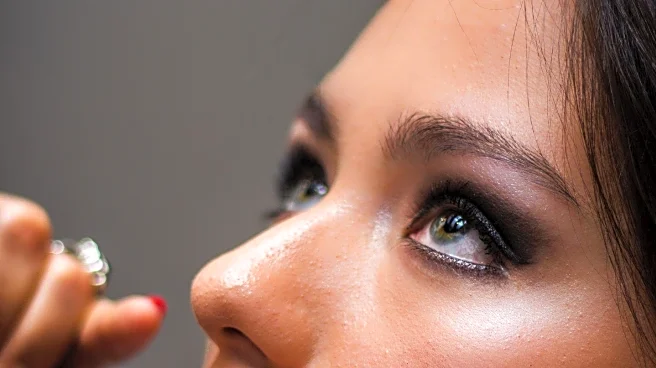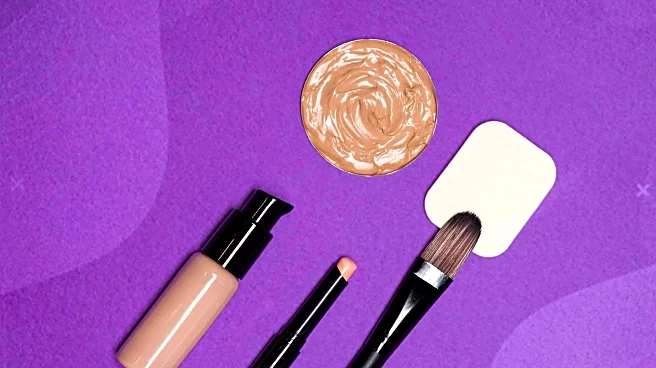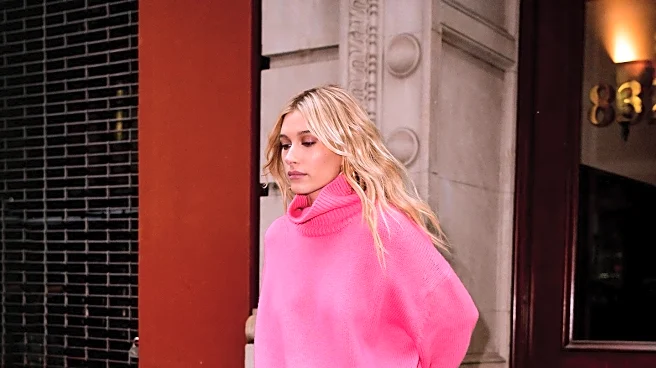What's Happening?
The 'bleph bun' trend, characterized by tightly pulled back buns and ponytails, is gaining popularity among celebrities such as Ariana Grande, Anne Hathaway, and Lindsay Lohan. This hairstyle mimics the effects of a blepharoplasty, or eyelid lift, by redirecting brows and eye corners, smoothing out crow's feet, and giving the appearance of a 'new face.' The trend is part of a broader movement towards undetectable cosmetic enhancements, moving away from dramatic makeovers to subtle changes. However, experts warn that the repeated tension on hair follicles can lead to traction alopecia, a condition where hair loss occurs due to excessive pulling, potentially causing permanent damage.
Why It's Important?
The 'bleph bun' trend highlights a shift in beauty standards, where subtlety and natural-looking enhancements are increasingly valued over overt cosmetic procedures. This reflects a cultural change in the perception of beauty, influencing consumer behavior in the beauty industry. However, the trend also raises health concerns, as the potential for traction alopecia could impact individuals who frequently adopt this hairstyle. This underscores the need for awareness and education on the long-term effects of beauty practices, potentially influencing public health messaging and the beauty industry's approach to product development.
What's Next?
As the 'bleph bun' trend continues to gain traction, it is likely that more celebrities and influencers will adopt the style, further popularizing it among the general public. This could lead to increased demand for products and services that offer similar aesthetic benefits without the risk of hair damage. Additionally, there may be a rise in public discourse around the health implications of beauty trends, prompting experts to advocate for safer practices and alternative styles that minimize the risk of traction alopecia.
Beyond the Headlines
The trend also touches on deeper cultural dynamics, such as the pressure on celebrities to maintain youthful appearances and the societal obsession with beauty standards. It raises ethical questions about the lengths individuals go to achieve certain looks and the role of media in perpetuating these ideals. Furthermore, it may influence the beauty industry's marketing strategies, as companies seek to capitalize on the demand for non-invasive beauty solutions.

